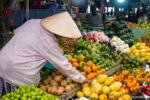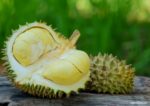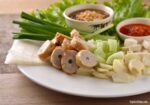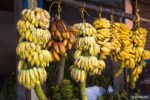Coconuts and palm trees are synonymous with the idyllic image of Thailand’s tropical beaches. These towering trees, swaying gently in the coastal breeze, are not just picturesque; they are deeply woven into the fabric of Thai culture and daily life. From their symbolic presence on resorts to their practical uses, coconuts and palm trees play a significant role in the country’s lifestyle.
Symbol of Beach Relaxation
The sight of coconut palms lining the shores is an iconic image associated with Thai resorts and beaches. These trees provide not only shade and a tropical ambiance but also a sense of tranquility and escape. For many, the presence of coconut palms is a quintessential part of the beach experience, offering a natural canopy under which visitors can relax and enjoy the scenic beauty of Thailand’s coastline. The gentle rustling of palm leaves and the rhythmic crashing of waves together create a soothing atmosphere that defines the ultimate tropical getaway.
Delicious and Nutritious
Coconuts are celebrated for their delicious taste and numerous health benefits. The flesh of the coconut is rich in fiber, vitamins, and minerals, making it a popular ingredient in Thai cuisine. Coconut water, known for its hydrating properties, is a refreshing drink enjoyed by locals and tourists alike. The oil extracted from coconuts is used for cooking and is also prized for its cosmetic benefits, being a key ingredient in many beauty products. Beyond the culinary and cosmetic uses, coconut oil is also used in traditional medicine, believed to have healing properties that can aid in the treatment of various ailments.
The Danger of Falling Coconuts
Despite their many benefits, coconut palms can pose a danger. The coconuts themselves, while valuable, can become hazardous when they fall from the heights of the trees. This is particularly risky during windy conditions. It is advisable to avoid standing or walking under coconut palms, especially during strong winds, to prevent injury from falling coconuts. In some regions, local authorities have even implemented regular coconut harvesting schedules to mitigate this risk and ensure the safety of both residents and visitors.
Fascinating Facts About Coconuts
Coconut palms have a remarkable lifespan, living up to 100 years. Throughout their lifetime, each tree can produce approximately 450 coconuts annually. This prolific production underscores the tree’s importance in providing a steady supply of coconuts year-round. The continuous yield of coconuts ensures that there is always a fresh supply available for various uses, from culinary delights to crafting and industrial applications.
One intriguing fact about coconut palms is their dependency on salt. These trees cannot survive without it. Annually, a single coconut palm absorbs around 1.34 kilograms of salt from the soil. This unique requirement highlights the symbiotic relationship between the coconut palm and its coastal environment, where salt is abundant. The saline environment not only nourishes the coconut palms but also contributes to the distinct flavor of the coconuts, making them a sought-after commodity.
Utilization of Every Part of the Tree
The coconut palm is a versatile tree, with every part being used for various purposes. The leaves are often woven into thatch for roofing, while the trunk can be used in construction and furniture making. The husk and shells of coconuts are used to create a variety of products, including ropes, mats, and even souvenirs for tourists. The coconut’s fiber, known as coir, is used in making brushes, doormats, and mattresses. In addition, the shells are often crafted into bowls, utensils, and decorative items, showcasing the ingenuity and resourcefulness of local artisans.
The versatility of the coconut palm extends to its role in sustainable living practices. In rural areas, the sap from the coconut flower is used to produce sugar and alcohol, contributing to local economies. Additionally, the palm’s biomass can be converted into biofuel, providing an eco-friendly energy source. This adaptability makes the coconut palm an essential component of sustainable agricultural practices, supporting both economic development and environmental conservation.
Cultural Significance
Beyond their practical uses, coconuts and palm trees hold cultural significance in Thailand. They are featured in traditional ceremonies and festivals, symbolizing prosperity and good fortune. The coconut’s hard shell and sweet water are often seen as metaphors for resilience and hidden potential, values that resonate deeply in Thai culture. During religious and cultural celebrations, coconuts are used as offerings, symbolizing purity and abundance. They are also incorporated into various rituals and customs, reflecting their integral role in Thai spiritual life.
In Thai folklore, the coconut palm is often revered as a sacred tree, with various myths and legends surrounding its origin and significance. These stories add a layer of mystique to the coconut palm, enriching its presence in the cultural tapestry of Thailand. The tree’s association with fertility and protection is evident in numerous traditional practices, where coconut palms are planted near homes and temples to bring good luck and ward off evil spirits.
Economic Impact
The coconut industry is a vital part of Thailand’s economy, providing employment and income for thousands of farmers and workers. From small family-run farms to large-scale plantations, the cultivation and processing of coconuts support livelihoods and contribute significantly to the country’s agricultural output. The export of coconut products, such as oil, water, and desiccated coconut, plays a crucial role in Thailand’s trade, bringing in substantial revenue and enhancing the country’s global reputation as a leading producer of high-quality coconut products.
Environmental Benefits
Coconut palms also offer environmental benefits, playing a role in coastal protection and soil stabilization. Their extensive root systems help prevent soil erosion and maintain the integrity of coastal areas, protecting against the impacts of storms and rising sea levels. Additionally, coconut palms contribute to biodiversity, providing habitats for various wildlife species. The trees’ presence supports the overall health of coastal ecosystems, highlighting their ecological importance beyond their economic and cultural value.
The Future of Coconut Palms in Thailand
As Thailand continues to develop and modernize, the future of coconut palms remains bright. Advances in agricultural technology and sustainable practices are set to enhance coconut cultivation, ensuring that these iconic trees continue to thrive. Efforts to preserve traditional knowledge and practices associated with coconut palms will play a crucial role in maintaining their cultural and economic significance.
In summary, coconuts and palm trees are much more than just a scenic backdrop in Thailand. They are an integral part of the country’s ecosystem, economy, and culture. From their nutritional benefits and practical uses to their symbolic presence and cultural importance, coconuts and palm trees truly embody the essence of Thai life. Whether you are savoring the refreshing taste of coconut water on a sunny beach or marveling at the craftsmanship of coconut shell souvenirs, these remarkable trees offer a connection to the natural beauty and rich traditions of Thailand.





